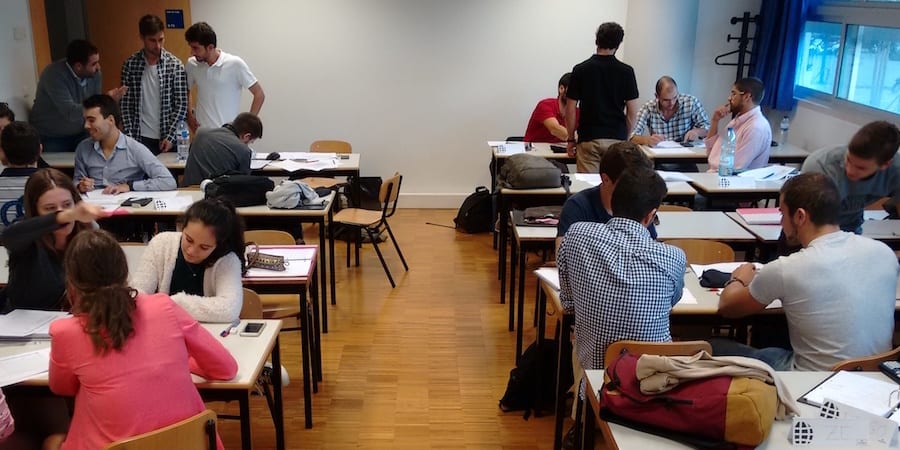
The role of coaching in hoshin kanri
FEATURE – The author discusses how the hoshin kanri process, coupled with effective coaching, helps us to tackle the challenges inherent to implementing change.
Words: Laura Mottola, Co-Founder, Lean Mining® Institute
Originally published on The Lean Post
Before anything else, an organizational transformation is a process of personal growth for leaders, one that requires reflection, self-awareness, and humility. Before expecting change at the team or organizational level, leaders should take the time to reflect deeply on the company’s current state and desired future state. This reflection inevitably invokes a struggle within them, which in turn catalyzes their desire for change and activates the “pull” needed to take the necessary steps to make the vision a reality.
To enlist the active participation of peers and team members, leaders need to build trust. When helped to see uncomfortable truths through an inner struggle of their own, people will begin to feel the same sense of urgency as their leaders and to actively seek change.
None of this is easy. In fact, ensuring that the need for change is widely accepted and that a coordinated response is put forward has been and continues to be a stumbling block for organizations trying to turn themselves around.
The hoshin kanri (strategy deployment) process, combined with effective coaching, offers companies a way to confront and overcome this challenge. It can be a key driver in the pursuit of a sustainable transformation.
UNDERSTAND THE CONTEXT
Before we delve into the synergies generated by combining strategy deployment and executive coaching, context is required. The honor of becoming a coach to senior leaders (or anyone else, as a matter of fact) is earned with humility and hard work, regardless of where you sit inside or outside the organization. First comes the recognition that we know very little, if nothing at all, and it is that desire to learn what we do not know that drives us to study intensely and experiment relentlessly to test our hypotheses. Trials will inevitably come with errors, and we must be willing to bear those scars, not hide them. The courage to venture into uncharted territory is our ticket to earned respect and the invitation to coach others through their journey.
Now comes the matter of leading an organization through a lean transformation and understanding senior leadership’s role in steering and participating in a hoshin process.
OVERCOME THE FEAR OF CHANGE
I am no psychologist – a recovering engineer, at best – but I have learned the hard way that without intrinsic motivation, there is no change and no way to overcome our inherent resistance to it. This resistance doesn’t arise from a fear of change itself; it stems from our fear of the unknown. Even the worst situation can become comfortable in lieu of an alternative that may be worse.
The process of hoshin kanri demystifies such uncertainty by providing a structured way to walk the path while it is being co-created. The approach brings everyone together to design, experiment, adjust, and act the way forward (using PDCA).
It can be an exciting and frightening experience at once, and I cannot downplay the fact that hoshin kanri – or any process to effect transformational change – is an emotionally-charged process of co-creation, fraught with obstacles and challenges. Hence, executive coaching is vital to support leaders who are engaged in facilitating hoshin kanri. They need guidance as they move through this challenging process to help them effectively coach their team members and, in many cases, teach them how to coach others.
The coaching provides leaders with a mirror to reflect upon their effectiveness as enablers of the hoshin kanri transformation process. Effective executive coaching heightens the leaders’ awareness and understanding of what is happening in the moment. It reminds them of their own struggle and how their coach helped them overcome the challenges – and thus, how they can help their team members overcome theirs.
DEVELOP PEOPLE
Coaching supports the leader in conducting a hoshin exercise and coaching others in the process. For this to happen, however, leaders need to recognize that developing people is key to a transformation and understand that it is their responsibility to guide and support their team members in their personal growth.
Not all leaders have experience or education about how to coach team members. Most likely, they are accustomed to telling their direct reports what to do, sometimes instructing how. The hoshin kanri process provides an opportunity to jointly develop a strategy-to-execution roadmap, aligning and adjusting along the way, even when it means “we’ll figure this out together.”
Inevitably, most people I have coached struggled with the mechanics of the practice routine (the Kata) and the time and effort it takes to master this new skill. Their desire to attain significant sustainable change is constantly strained by the need to show tangible short-term results. The reflex to use tactics that served them well in the past is hard to control, let alone overcome.
Trust that the hoshin process will yield transformational change if we successfully engage the leaders and, in turn, most of their team members through coaching and collaborative work. The energy generated is palpable, and progress accelerates as people begin to feel their voice heard, the purpose is clearly articulated, and shared understanding is achieved. Staying the course during the difficult initial phases of the hoshin kanri process is paramount, making executive coaching even more critical at this stage to reinforce the positive signs and inspire confidence in the intent and validity of the exercise. Ongoing executive and team member coaching ensures the organization sustains initial gains and establishes a cadence of continuous improvement.
PRACTICAL TIPS FOR COACHES
While hoshin kanri is a process that provides a structured way to implement change in an organization, coaching strengthens that process by helping leaders and team members adopt the mindset and practices that ensure success.
Seemingly easy to understand but challenging to achieve, here are six areas where a coach will help leaders execute a successful organizational transformation.
- Learn from the past, don’t denigrate it
There are many ways to tackle a strategic planning process – each is valid for a specific business context. Indeed, the approach that was used in the past had its time and purpose. We must learn from that previous process and build on it, not discredit it. Hoshin kanri provides a way to use the knowledge gained from earlier attempts as a platform upon which to build the next iteration. When we are dissatisfied with the current state (for whatever reason) and seek a different way to look at the company and shape its future in a changing environment, hoshin kanri offers a collaborative way to think deeply about the situation, build on common ground, and forge a path forward.
- Make it personal through practice
The lean transformation of an enterprise requires that all people, at all levels, learn to solve problems collaboratively. Executive teams engaged in a hoshin kanri process lead the organization by example, demonstrating the process required to build capability. We know that in learning a new skill, there is no substitute for practice. When the team members see their leaders “walking the talk,” they become more willing to follow the process. Through this consistent practice, both leaders and team members build intrinsic motivation. Coaching reinforces this need to practice the process, which in turn makes the process personal and ensures it inspires a move to action from within.
- Build trust through facts
Building trust requires the courage to have honest, open communications. Generating a certain level of discomfort is necessary to shift the conversation to the crux of the matter, exposing sore points and eliciting uneasiness with the status quo without assigning blame. Relying on the cold-heartedness of facts to make problems visible allows for an honest, dispassionate analysis of the situation, which in turn enables teams to reach a consensus.
- Balance dissatisfaction with inspiration
The leader facilitating the hoshin kanri process is continually walking a thin line between creating dissatisfaction with the current situation and offering a healthy dose of inspiration with a vision of the future. Facilitators of every step in the process must enable the team members to passionately engage in it so it doesn’t become stale, lifeless. They must remind the group to “go hard on the system, but soft on people.
A leader’s role is to support the team in balancing analysis, discovery, ideation, and consensus-building. The coach’s role is to support the executive to improve self-awareness and reflection.
- Deploy strategy, coach at all levels
Hoshin kanri is a strategy deployment process that links the company’s True North with execution plans at all levels of the organization. Naturally, there is a need for coaching lower levels through the functional deployment of the corporate hoshin in successive iterations of collaborative discovery. By extending coaching throughout the organization, the experience and knowledge gained during the hoshin process are passed on to others via learning by doing. Such process brings the hoshin to life and makes it relevant and appealing to all people involved. Clarity of purpose and what needs to happen is achieved in cycles of refinement.
- Coach for personal growth
If transformation comes through personal growth, then the coaching that supports hoshin kanri should focus on helping leaders become teachers and coaches who are committed to both self-development and the development of others. Among the most important coaching points are the following:
- Understand the importance of humility and hard work, and how to be comfortable realizing and admitting how much you need to learn and commit to doing the hard work and experimentation.
- Recognize the fear of change for what it is – the fear of the unknown and how to face it – and help others do so as well.
- Trust that enhancing your team members’ skills and abilities is the key to achieving organizational success, and learn how to facilitate their personal and professional growth.
- Realize the fundamental differences between the process that led to the current state and how to leverage that knowledge to achieve the desired future state.
- Understand that learning by doing is essential to build deep understanding through shared experience.
- Appreciate how focusing on facts builds trust and learn how to shift the conversation back to the facts, reflect, and share back with the team.
- Acknowledge the difficulties of staying the course and learn how to embrace the process, and commit to self-development.
Join Laura on her workshop "Hoshin Kanri Remotely – Aligning and Executing on Your Organizational Objectives", which kicks off on February 16th.

THE AUTHOR

Read more


OPINION – After reading the latest book by Edgar H. Schein, the author reflects on the nature of consulting and management, and explains why humility must become a defining trait of both.


CALL TO ARMS – Despite the spread of lean principles across the world, only a handful of universities have included the methodology in their programs. This article is a call-to-arms telling us why we have an obligation towards future generations.




FEATURE – In a market where products become obsolete very fast, this Toyota supplier has learned the importance of staying true to its heritage and developing know-how and people’s capabilities.

